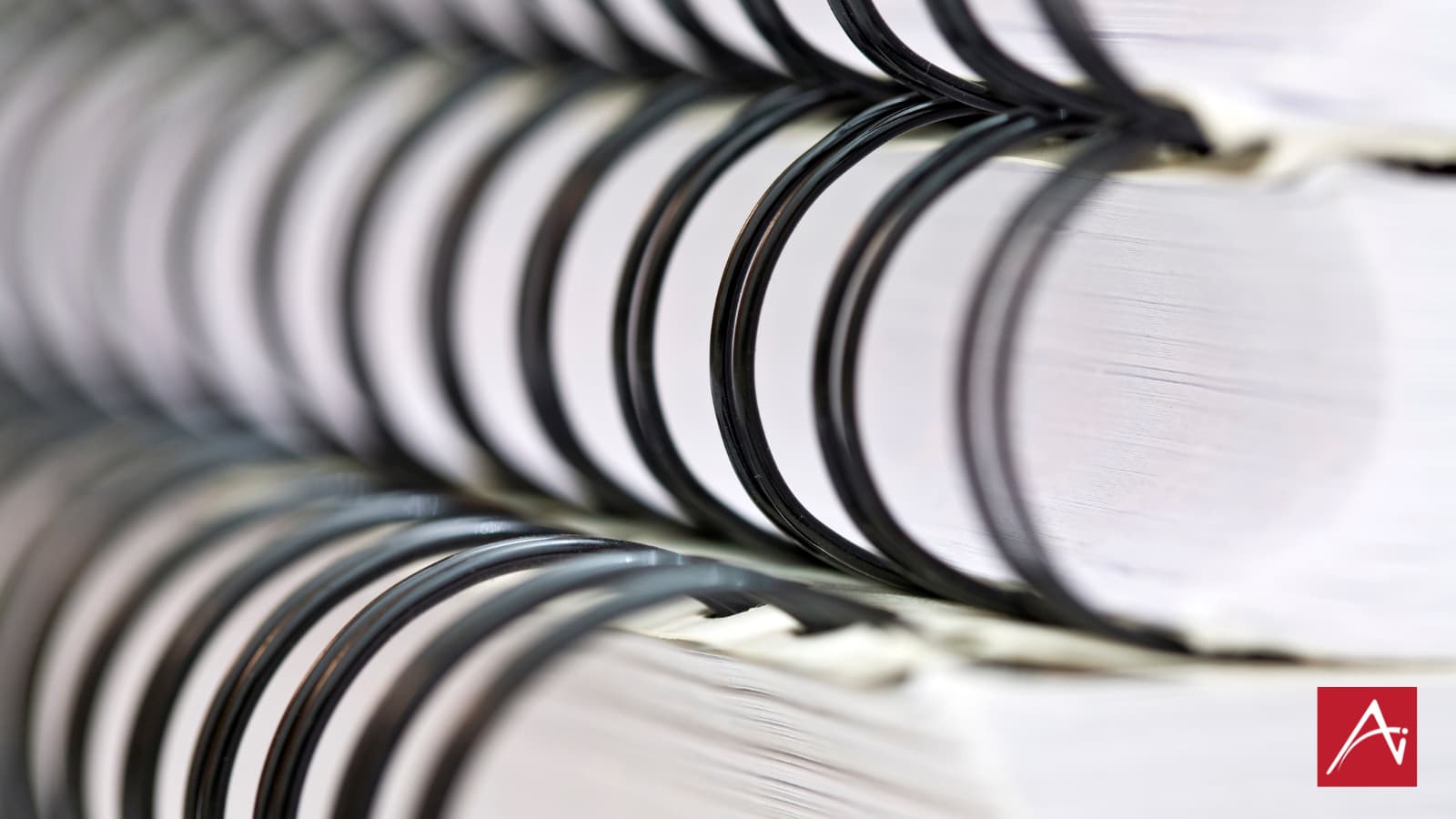Print marketing materials extend far beyond standard one-pagers and the like doled out at conferences and single-sided prints for direct mail campaigns. Printing attractive, intelligently designed materials often means your standard printer can’t keep up with the specs, volume, or speed required to meet deadlines and reach new customers. And, let’s face it: your customers are busy and run-of-the-mill materials just won’t cut it—especially if you rely on different printers to produce materials that require finishing.
There are several ways your business benefits from turning to a single printer with additional binding options. Your printer’s expertise in the field can help drive your print or multi-channel marketing campaign. Let’s take a look at some of the ways that a printer’s finishing capabilities can truly elevate your next marketing piece.
Advanced Finishing Options
Even printing your piece on high-quality, glossy paper isn’t going to be enough to truly make it stand out from your competition. Your printer should be able to offer multiple advanced techniques that can give your piece that “wow” factor that grabs the attention of your customers.
But what exactly are some of those finishing options that take your pieces to the next level? Glad you asked.
Die Cutting
Everyone’s familiar with basic rectangular shapes. While they do the trick, they don’t typically offer much in the way of visual appeal. That’s where a die-cut cover comes into play.
If you have a unique shape associated with your organization (think a unique building or the shape of a product), you may want your designs to take on that shape. A custom die can be created that will cut the covers and pages into that shape, allowing your piece to truly be eye-catching and unique.
Specialty Coatings
Applying a specialty UV coating to your piece can give it a unique look and feel. A UV coating is a clear compound that is applied to paper wet, and then instantly dried by ultraviolet light.
UV coatings can offer a variety of thicknesses and sheens to your piece. They can also give your piece a significantly different texture, creating a far smoother surface that’s sure to be noticed. In addition, you can spot-treat a specific area on your cover with UV coating as a way of bringing special attention to that element.
These coatings can also offer a layer of protection of your materials; while not waterproof, they do allow water to bead up far more than an untreated cover material, increasing the overall durability of your piece.
Judge A Book by Its Cover?
Let’s face it—the cover of your piece is the first thing that your customers are going to notice, and it’s important that the cover offers a strong impression. The first step is choosing your binding options.
Any commercial printer should be able to offer you multiple binding options, including perfect binding, saddle stitch binding, or spiral binding. These offer different advantages based upon the ultimate use of the finished piece.
- Perfect Binding: also known as softcover binding, these finishes offer an option for getting large quantities printed quickly and efficiently. They’re also lighter (and therefore cheaper) to ship when compared to hardcover binding, but aren’t really ideal for presentations or heavily referenced manuals.
- Saddle Stitch Binding: a simple, cost-effective binding ideal for materials that don’t have a long shelf life, such as seasonal or quarterly campaigns.
- Spiral Binding: these pieces are held together with a spiral comb along the bound edge, allowing for a more durable finished product for items like reference materials that will see significant repeat use.
The typical binding options aren’t enough to make your piece stand out from your competitors, though. If you truly want to create an eye-popping product that makes your customers take notice, you need to find a vendor that offers the next tier of finishing options, such as embossed covers or foil stamping.
Embossed Covers
Embossing is a technique that creates a raised texture on the cover to add special emphasis. This could take the form of raised lettering or some type of design to make the cover stand out.
Creating an embossed cover simply requires taking the design to be added and pressing it into the cover material from underneath it. It adds a noticeable finishing touch beyond simply printing the title or a design onto a cover design.
Foil Stamping
Another way to truly offset your cover design is to apply hot metal foil to the cover of the book using a stamp or after embossing the design into the cover. This not only adds texture but also creates a visual impact that can make your design stand out.
Because you’re using a hot metal foil to create your design, foil stamping offers far greater durability than the use of metallic inks that can flake or crack over time.
Your Finished Product
Any commercial printer can handle the basics of binding your product in a way that is going to keep your pages in order, but a full-service bindery like Associates International can offer the additional finishing options that truly make your piece stand out. Having a range of options under one roof provides you the flexibility and choice (as well as professional input) on what method might work best for your needs.
Ready to bring your next great, customer-winning marketing collateral to fruition with an in-house team of print and marketing experts? Reach out to Associates International today to learn how we can help make it happen.
Comments are closed.

